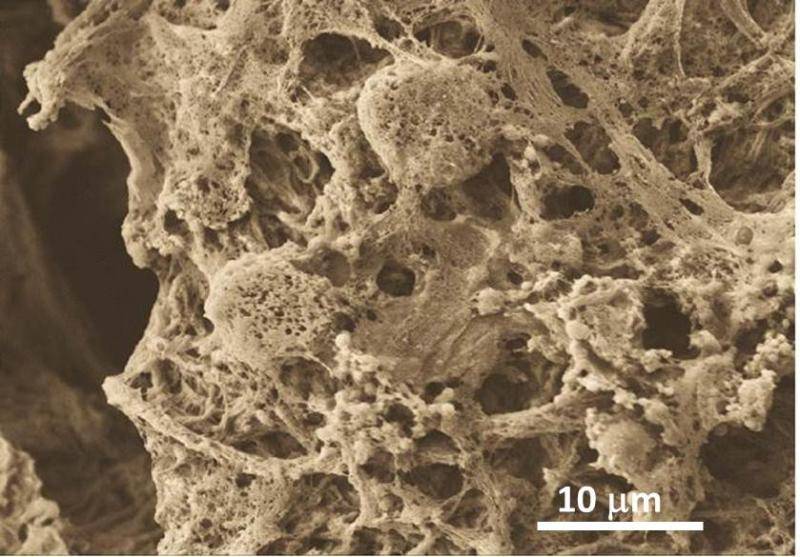Weak bones, broken bones, damaged bones, arthritic bones. Whether damaged by injury, disease or age, your adult body can’t create entirely new bone, but maybe science can. Researchers at North Dakota State University, Fargo, are making strides in tissue engineering, designing scaffolds that may lead to ways to regenerate bone. Published in the Journal of Biomedical Materials Research Part A, the research of Dr. Kalpana Katti, Dr. Dinesh Katti and graduate student Avinash Ambre includes a novel method that uses nanosized clays to make scaffolds to mineralize bone minerals such as hydroxyapatite.
The NDSU research team’s 3-D mesh scaffold is composed of degradable materials that are compatible to human tissue. Over time, the cells generate bone and the scaffold deteriorates. As indicated in the NDSU team’s published scientific research from 2008 to 2013, the nanoclays enhance the mechanical properties of the scaffold by enabling scaffold to bear load while bone generates. An interesting finding by the Katti group has shown that the nanoclays also impart useful biological properties to the scaffold.
“The biomineralized nanoclays also impart osteogenic or bone-forming abilities to the scaffold to enable birth of bone,” said Dr. Kalpana Katti, Distinguished Professor of civil engineering at NDSU. “Although it would have been exciting to say that this finding had a ‘Eureka moment,’ this discovery was a methodical exploration of simulations and modeling, indicating that amino acid modified nanoclays are viable new nanomaterials,” said Katti. The work was initially published in the Journal of Biomacromolecules in 2005. The current findings point toward the potential use of nanoclays for broader applications in medicine.
The NDSU’s group most recent study in the Journal of Biomedical Materials Research Part A, published online Feb. 15, 2013, reports that nanoclays mediate human mesenchymal stem cell differentiation into bone cells and grow bone. The Katti research group uses amino acids, the building blocks of life, to modify clay structures and the modified nanoclays coax new bone growth. “Our current research studies underway involve the use of bioreactors that mimic fluid/blood flow in the human body during bone tissue regeneration,” said Dr. Kalpana Katti.
The Katti group at NDSU has pioneered the use of nanoclays in bone regeneration since 2008, with research results appearing in Biomedical Materials, ASME Journal of Nanotechnology for Engineering and Medicine, Materials Science and Engineering C, along with the February 2013 publication in the Journal of Biomedical Materials Research Part A.
Bone tissue engineering represents important promise for regenerative medicine, according to Dr. Kalpana Katti. National Institutes of Health information shows that more than one million Americans have a hip or knee replaced each year. An aging population, in addition to orthopedic injuries of military veterans, and diseases such as osteoporosis and arthritis mean that the promise of scientific research to generate human bone could have far-reaching implications in the future.
Story Source:
The above story is reprinted from materials provided by North Dakota State University





